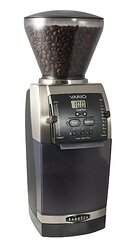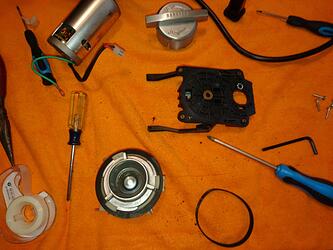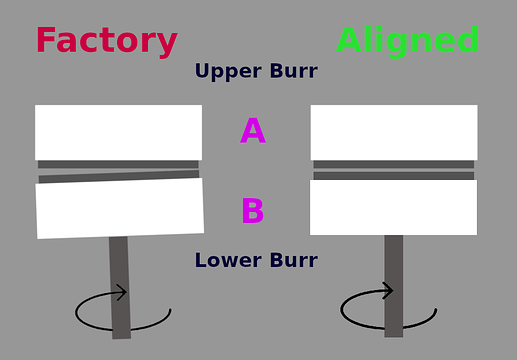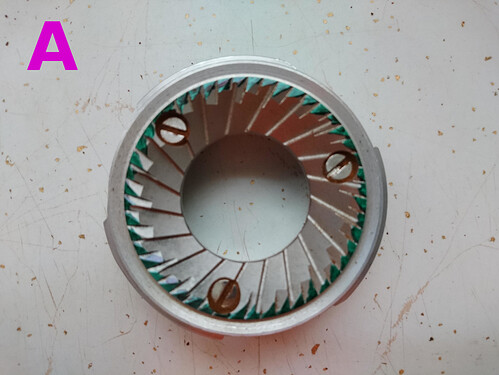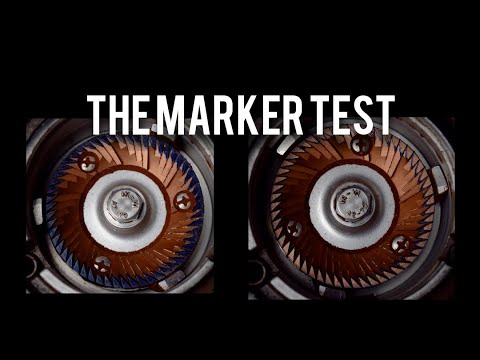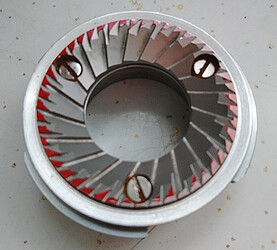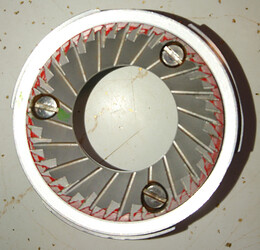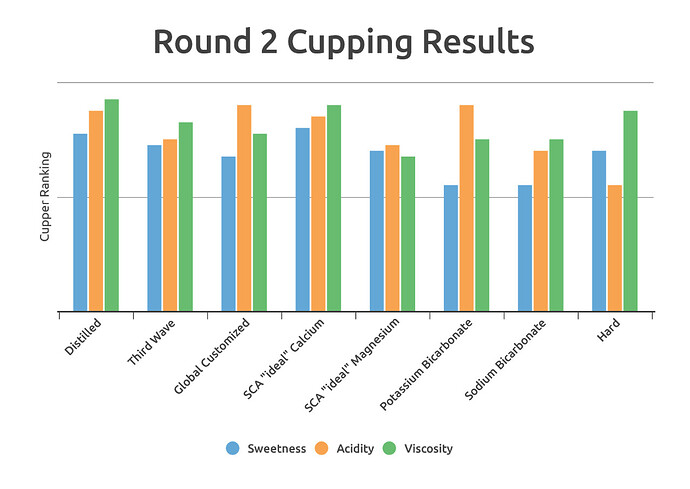What kind of data do you want since it all needs to correlate to taste, right? Which is all subjective.
well some aspects of it are extremely subjective but something like “when I increased the water:coffee ratio I noticed less acidity” would be better than “this is the best water:cofffe ratio” with the unspoken “I know this because all of the other coffee blogs said so”.
especially if they’re doing this testing in some sort of structured method. it doesn’t have to be the most rigorous to be an improvement over the seat of the pants “I like this and I’m going to write about it authoritatively because that’s how you become an influencer” method
Intend to tear this Vario down today for general inspection and an alignment attempt without the upgraded parts. The process itself seems fairly straightforward. I’ll check the alignment first with the ink test and then see how much I can improve it before throwing another $50 at it.
I have two different scales I’ve been using that I intend to review for the thread. Neither is perfect and there are pros/cons for each that I’d like to point out.
@pvn I also added some quality loose leaf tea to my latest coffee order since it was cheap and bumped me to free shipping. Other than matcha I’ve never really gotten into high-quality tea cultivars. Is there a Panama gesha of tea that would blow me away?
I’m a tea dilettante. I mostly drink it when I find myself at starbucks (their green tea and their chai are both pretty good IMO as a casual tea drinker, much more enjoyable than their drip or espresso).
My wife briefly looked like she was going to get “really into” tea but I think she quickly found it too much fuss and went back to getting whatever in bags, which pretty much ended my brief excursion.
I should probably explain what I’m doing. Basically some dudes on a coffee forum figured out that these Baratzas (all Vario and Forte models) can be aligned to a level of precision comparable to grinders that are thousands of dollars (this is because the rotating piece has very low runout). The advantage is the ability to grind at a very consistent, unimodal particle size, but only if the upper and lower burrs are squared up. There’s nothing new or unique about this–even the revered EK43 requires precision alignment. Here is the problem:
You can see how a misaligned factory grinder is problem: for any target grind setting, the misaligned burrs (left) will produce a range of particle sizes from boulders to fines depending on the degree of misalignment. Aligned burrs (right) will produce far more uniform particle sizes. The trick here is basically pushing the burrs together to force alignment and then securing the mounting screws to hold that alignment.
To check alignment, we can color the flat outer ring of the burrs with ink and then run the motor briefly while the two burrs touch. But really we just need to pay attention to the top burr since it’s stationary. The bottom burr is rotating, so it should clear ink all the way around unless it’s warped. Here is the top burr just after adding ink. Everywhere you see green is a flat and highest part of the burr surface that will come in contact with its mirror image on the lower burr.
Now we just need to spin it while they’re touching and see where the ink rubs off. If it wears evenly then the burrs are aligned. If it doesn’t then there are high and low spots which are usually fixable by shimming the top burr with foil or something. Then repeat until the pattern is uniform. However, mine aren’t touching at all right now, so I think that means some adjustments on the coarse calibration screw are required.
This seems a tad insane.
Right it seems crazy but clearly you can see the problem if we’re trying to tightly control the particle distribution:
Typically for percolation we’re shooting for the 400 to 800 μm particle size. The problem with fines (< 400 μm) and boulders (> 800 μm) is that they extract unevenly in opposite directions, and the flavors produced by that suboptimal extraction tend to be rather strong, masking the delicate flavors in high-quality coffees. Probably doesn’t matter for darker roasts much if at all. However, for lighter roasts packed with sugars and acids, it appears to be the formula for these paradoxical brews that can taste both bitter and sour at the same time while not having much clarity for specific tasting notes. It obviously applies to espresso as well since you’d like to have the ability to go super fine without choking the machine.
People have noticed the problem a lot especially with the gold standard EK43. They pay $3k for a grinder that produces unremarkable coffee and wonder what all the hype is about. It turns out that the hype is from an EK43 with excellent alignment, but they don’t ship that way from the factory. You can see here that it’s a pretty similar procedure for all flat burr grinders:
hell yeah, that’s why it’s awesome
it’s doubly awesome because I can just watch lawnmower man do this insane shit without me having to get off my ass and do it myself
First marker test == fail. I thought these were dry-erase markers but upon further examination they are wet-erase markers and not clearing even significantly past chirp. Might have to hit those mean covid-filled streets for a marker run.
Located a marker. Well, this seems unusual compared to most I’ve seen. I flipped it over keeping the clockwise orientation intact (bottom screw is dead center to the front face of the grinder).
You can see that it’s clearly a left/right thing and not a front/back thing. Many of them are front/back wipe patterns due to tension from the belt. This is a 6:00 to 12:00 pattern. I dunno what the mechanical reason for that might be, so I’m gonna shim this with foil under the red ink for now.
Isn’t there a concern that the ink you are putting on the grinder will contaminate the coffee beans?
Nah it wipes off easily and then I cleaned it with isopropyl and wiped down with a fresh cloth before running 100g of old beans through it to season. Final pattern:
This is extremely close because the red at 3:00 to 4:00 is smeared, not untouched. I shimmed it with foil equidistant between screws in two different spots that were low. Two layers of “heavy duty” aluminum foil wasn’t enough, but four was too many. That was close but I still had a high spot which was remedied by torquing the screw in that area about an extra 1/8th of a turn. Think about that for a second. These are crazy tolerances and I’m curious to see how long this alignment holds.
Not trying to rabbit hole water right now but lol at this result I just found from a cupping that some serious coffee people did. Distilled is playing the jobber role here and is supposed to be easily defeated by the commercial products and Sophisticated Aquaphile Recipes(R).
Surprisingly, distilled water performed very well, earning the highest tallied point score as well as and top ratings from both Richard and Jen. It presented a balanced acidity, decent sweetness, and a silky, smooth mouthfeel.
Jen wondered aloud if perhaps less is more; maybe too many compounds in water just get in the way of flavor. Further evidence to support this came in the form of hard water, which rated lowest of the table in acidity but near the top in viscosity — thick and muddy, a good cup for a truck stop, perhaps, but not ideal for a specialty roaster.
Ha. Part I of this series is full-bore Through the Looking Glass where they lay out a bunch of water chemistry meowchow and theorize about what should work. If you have never made recipe water before, consider yourself lucky. Then there is Third Wave Water which costs $15 for 12 packets that you add to gallon containers of distilled water to–drumroll please–apparently make your coffee taste worse than if you had simply used untouched distilled water.
Cliffs: You can probably just use distilled water which costs something like 79c per gallon and doesn’t require pipettes and milligram scales. If that doesn’t work for you, try mixing it with tap/filtered in a 3:1 ratio or so. *This is assuming light to medium roast coffees.
to elsapo’s question above, this is what I’m talking about. even though there is a huge subjective element to “what I like” there are objective ways to measure what different techniques actually do. Maybe you like the taste of this scam water additive shit, idk, but we can still do some measurement and observation to figure out what is actually happening separate from “does this taste better or worse”

What’s amazing is that if you Google something like coffee distilled water, what you find are endless links telling you to never brew coffee with distilled water because there aren’t enough minerals to extract all of the flavors. And it seems like a thing somebody claimed 15 years ago and it became “known” and no one ever actually checked or challenged it. Same phenomenon with a $100 conical burr grinder being “just as good” as a $500 flat burr grinder for drip. LRSO is a whole different ball game from the dark roast stuff people were basing all of this advice on.
Btw I’ve brewed two pots now using a mix of two leftover Ethiopians (only coffee I had on hand) and the difference in the cup is exactly what I was talking about: the “midrange” is way clearer, the cup is more balanced, especially the acidity. This is a lot closer to the profile I expect from a cafe.
The grind itself looks a bit more consistent and I’m grinding rather fine for V60 with no hint of mud in the bed. I was surprised at how steadily and consistently it drained given this fine of a grind. Looking at it in the cone, I would have laid odds that it slowed down or choked at the end and instead it just drained right through at the same pace the entire brew.
this is EXACTLY what I’m talking about, this shit just puts me on hypertilt
